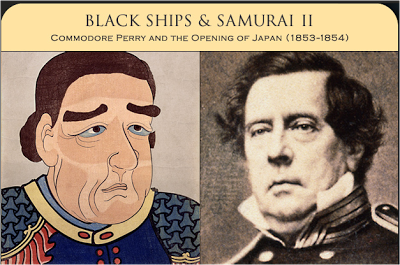World History
 This MIT site, called "Visualizing Cultures"is a great resource for both World History and AP World when we study imperialism. The site includes outstanding visual narratives on which curriculum units are based. Most of the curriculum units ask students to analyze various images. Some of the units include the Canton Trade System, the Opium War, and Commodore Perry and the Opening of Japan, to name just a few. My thanks to my colleague, Jeff Feinstein, for sending me the link. I knew of Columbia University's, Asia for Educators, but was not familiar with the MIT site.
This MIT site, called "Visualizing Cultures"is a great resource for both World History and AP World when we study imperialism. The site includes outstanding visual narratives on which curriculum units are based. Most of the curriculum units ask students to analyze various images. Some of the units include the Canton Trade System, the Opium War, and Commodore Perry and the Opening of Japan, to name just a few. My thanks to my colleague, Jeff Feinstein, for sending me the link. I knew of Columbia University's, Asia for Educators, but was not familiar with the MIT site.
- "how Euorpe Went To War In 1914"
The Imperial War Museum has a terrific essay with great images about the causes of World War I. The essay is more engaging than most textbooks and might make for a good reading assignment. Other stories include: "Five Things you Need to Know About...
- 10 Things You Didn't Know About Ghandhi
For the 67th anniversary of his death, the internet news site, Quandly, has a flip chart of 10 facts that you probably don't about Mahatma Gandhi. Did you know, for example, that Gandhi walked about 18 kilometers a day all his life....
- Quizlet For Review Games
As I like to tell my students, just completing the review guide is not actually studying. Sure they say it is until I ask them how they know if they know the material. That is why I link Quizlet cards to our units. Above you can see...
- Reading Like A Historian: Stanford University
You gotta love Stanford University. Their education group has created a site called "Reading like a Historian." They created lessons for world history, each of which revolves around a central question, and uses primary documents to analyze the question....
- The Standard Of Ur
My colleague, Frances Coffey, sent me this site on the Standard of Ur and this one from the BBC. She has a great idea about how to use the images--have the kids analyze it and try to apply the characteristics of civilization to it. At both sites, you...
World History
MIT's Visualizing Asian Cultures

- "how Euorpe Went To War In 1914"
The Imperial War Museum has a terrific essay with great images about the causes of World War I. The essay is more engaging than most textbooks and might make for a good reading assignment. Other stories include: "Five Things you Need to Know About...
- 10 Things You Didn't Know About Ghandhi
For the 67th anniversary of his death, the internet news site, Quandly, has a flip chart of 10 facts that you probably don't about Mahatma Gandhi. Did you know, for example, that Gandhi walked about 18 kilometers a day all his life....
- Quizlet For Review Games
As I like to tell my students, just completing the review guide is not actually studying. Sure they say it is until I ask them how they know if they know the material. That is why I link Quizlet cards to our units. Above you can see...
- Reading Like A Historian: Stanford University
You gotta love Stanford University. Their education group has created a site called "Reading like a Historian." They created lessons for world history, each of which revolves around a central question, and uses primary documents to analyze the question....
- The Standard Of Ur
My colleague, Frances Coffey, sent me this site on the Standard of Ur and this one from the BBC. She has a great idea about how to use the images--have the kids analyze it and try to apply the characteristics of civilization to it. At both sites, you...
